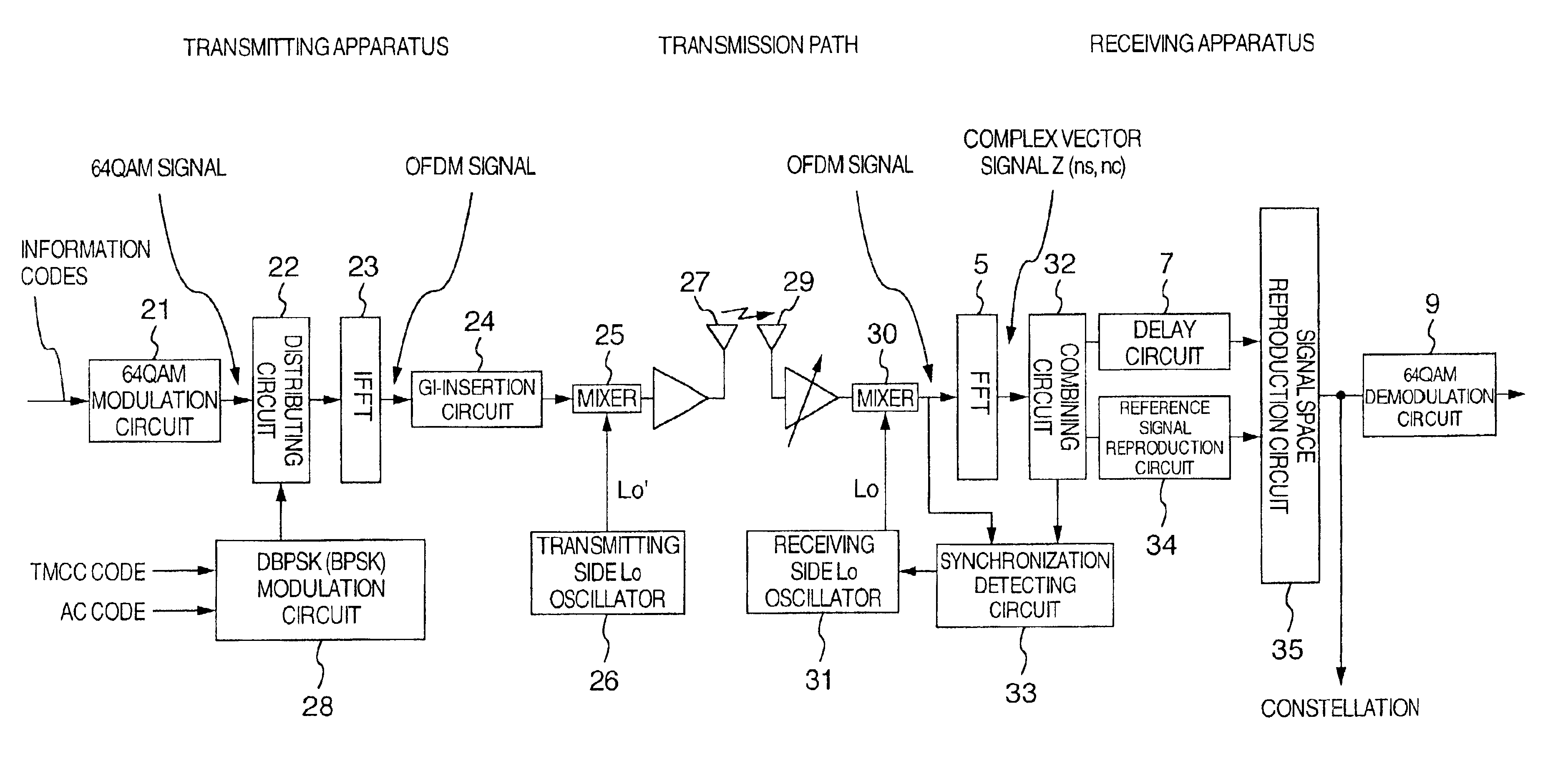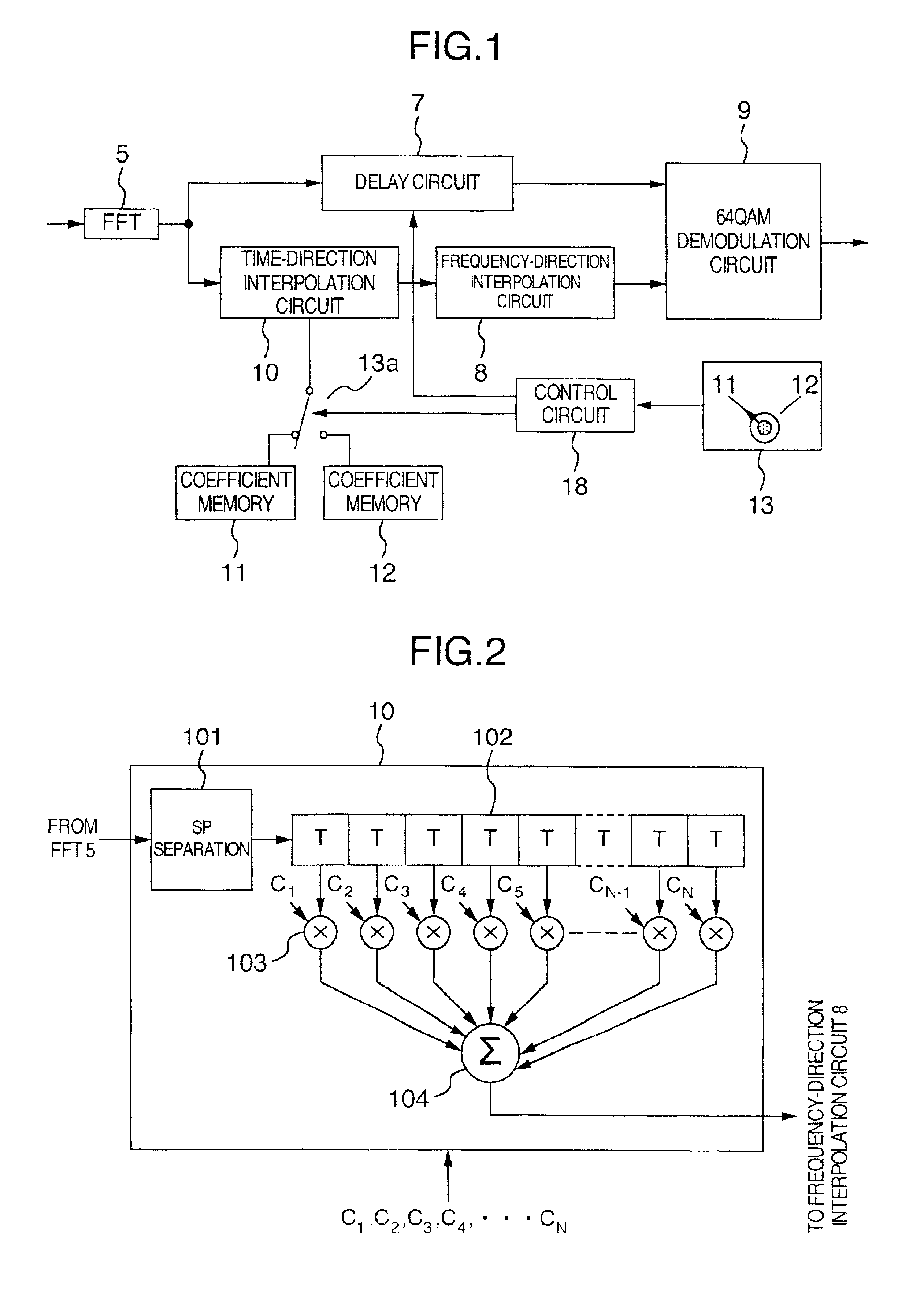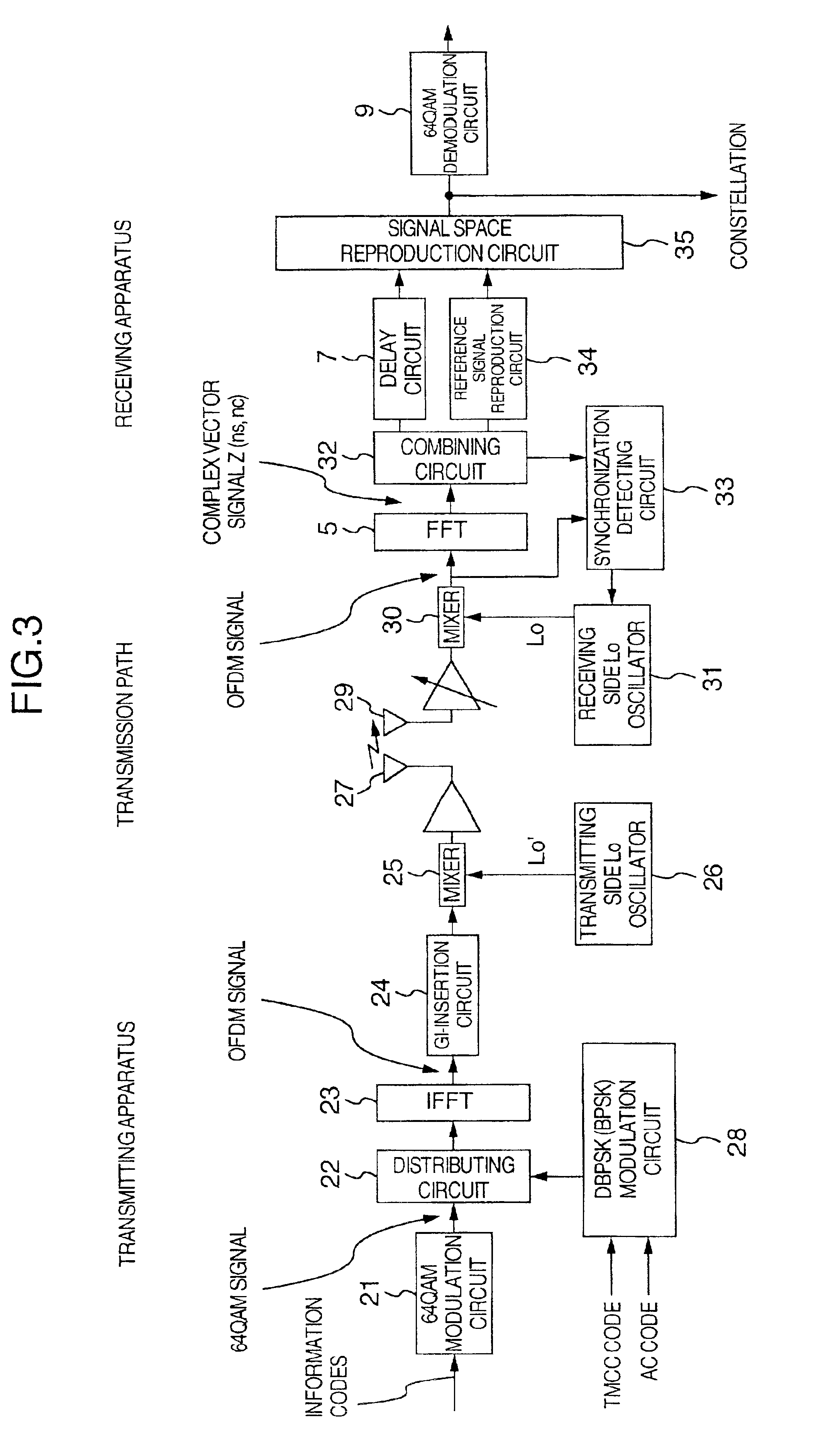Receiving apparatus for signal transmission system of orthogonal frequency division multiplexing type
a signal transmission system and receiving apparatus technology, applied in the field of receiving apparatuses for signal transmission systems of orthogonal frequency division multiplexing type, can solve problems such as noise in the reception of modulated signals, and achieve the effects of reducing noise, low error rate of code, and reducing noise levels
- Summary
- Abstract
- Description
- Claims
- Application Information
AI Technical Summary
Benefits of technology
Problems solved by technology
Method used
Image
Examples
first embodiment
[0065]FIG. 1 is a schematic diagram illustrating a first embodiment according to the present invention and particularly FIG. 1 illustrates a circuit portion for reproducing a reference signal vector of a receiving apparatus of the OFDM scheme. The first point thereof different from the conventional circuit of FIG. 11 is that coefficient memories for storing coefficient values of an LPF used in a time-direction interpolation circuit 10 is disposed outside of the interpolation circuit 10. The second point different from the conventional circuit is that two or more coefficient memories are provided and switched by a switch 13a controlled by a control circuit 18 by means of an operation unit 13 so that an optimum coefficient value can be used in accordance with transmission conditions. The third point different from the conventional circuit is that a delay time of a delay circuit 7 is also switched simultaneously when the plurality of coefficient memories are switched.
[0066]The blocks o...
second embodiment
[0083]the present invention is now described.
[0084]The second embodiment is different from the first embodiment in that the second embodiment uses a carrier structure in which pilot signals (CP) are inserted continuously in the time direction as shown in FIG. 4, whereas in the first embodiment it is premised that the pilot signals SP are inserted at regular intervals in the time direction as shown in FIG. 10. In FIG. 4, the mark indicating the positions where the pilot signals are inserted is changed to CP (Continual Pilot) for emphasizing continuous insertion in order to clear the difference from the carrier structure of FIG. 8 where the pilot signals are inserted sporadically.
[0085]In the case of the carrier structure shown in FIG. 4, the pilot signals CP are continuously inserted into carriers having a certain frequency in the time direction.
[0086]Accordingly, in the interpolation in the frequency direction, the pilot signals CP can be used as they are and it is not necessary to ...
PUM
 Login to View More
Login to View More Abstract
Description
Claims
Application Information
 Login to View More
Login to View More - R&D
- Intellectual Property
- Life Sciences
- Materials
- Tech Scout
- Unparalleled Data Quality
- Higher Quality Content
- 60% Fewer Hallucinations
Browse by: Latest US Patents, China's latest patents, Technical Efficacy Thesaurus, Application Domain, Technology Topic, Popular Technical Reports.
© 2025 PatSnap. All rights reserved.Legal|Privacy policy|Modern Slavery Act Transparency Statement|Sitemap|About US| Contact US: help@patsnap.com



